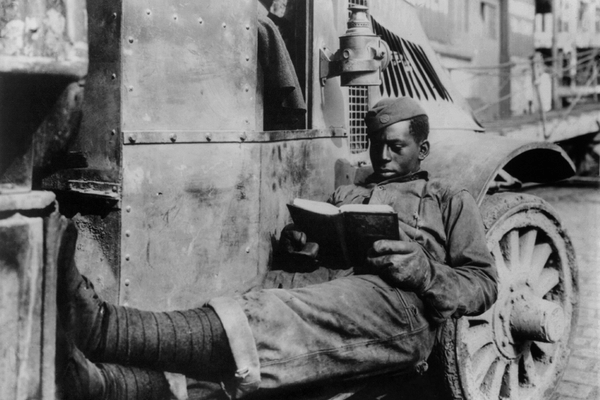
Last year, on March 24, 2021, Canada’s House of Commons voted unanimously to recognize August 1 as Emancipation Day. It marks the day when the British Empire abolished the practice of slavery for close to a million African people and their descendants across the former colonies in 1834.
After years of campaigning by Black legislators and community advocates, Canada officially marked the abolishment of slavery nearly 200 years ago. However, many Canadians aren’t aware Indigenous people were enslaved along with African people on the land that is now Canada.
Those who fought enslavement are pivotal in shaping our society to be as diverse as it is today. Emancipation Day honours the strength and perseverance of Black communities in Canada.
Nova Scotian Independent Senator Wanda Thomas Bernard, a leading figure in the push to recognize Emancipation Day, said in an online statement that called the day a “monumental milestone for Black people in Canada.”
“In 2021, African Canadians continue to experience systemic anti-Black racism and substantial economic inequalities. Understanding our full history provides a critical perspective of the persisting condition of poverty and violence within Black communities, acknowledging these as systemic issues, not individual issues,” she said.
On March 23, 2022, Prince Edward Island became the most recent province to unanimously pass a bill to observe August 1 as Emancipation Day.
History of slavery in Canada
Slavery before the arrival of Europeans had some Indigenous people enslaving prisoners taken in from war. Unlike Indigenous people, Europeans saw enslaved people not as human beings but as property that could be bought and sold. More critically, Europeans viewed slavery in racial terms, with Indigenous and African people serving and white people ruling as masters.
The transatlantic slave trade resulted in the death of millions of African people. Many of the lives lost were resistance fighters, enduring long treks to slave ships and injustice and malnourishment during the voyage across the Atlantic, in which two million Africans died.
More than 12 million enslaved Africans were transported to Latin America and the Caribbean and 6% were brought to North America. Once they landed in North America, enslaved Africans were forced to work in the fields, do manual and domestic labour, change their names, abandon their faiths and cultures and stop speaking their native language.
The number of enslaved Africans brought into North America eventually outnumbered enslaved Indigenous people.
The enslavement of Indigenous people in Canada dates back to the 1400s and 1500s, where European explorers kidnapped Indigenous people and brought them back to Europe to be enslaved or displayed.
Like enslaved Africans, Indigenous people were not granted basic human rights and were treated as property for manual and domestic labour. More than half (57%) of enslaved Indigenous people were girls and young women, with the average age being 14.
Upper Canada, now Ontario, was the first colony in the British Empire to have anti-slavery. John Graves Simcoe, the first Lieutenant Governor of Upper Canada, passed the 1793 Act Against Slavery, banning the importation of enslaved people and mandated that children born to enslaved women would be enslaved until they were 25 years old.
As a result, more than 30,000 enslaved Africans in America came to Canada via the Underground Railroad until the end of the American Civil War in 1865.
The 1793 Act Against Slavery was superseded by the Slavery Abolition Act 1833, which ended slavery in the British Empire on August 1, 1834, which resulted in freeing 800,000 enslaved Africans and Indigenous people across all British colonies.
For most enslaved people, the Act only resulted in partial freedom. It only freed children under the age of six, while others were to continue to serve their former owners for four to six years as apprentices. The Act did confirm Canada as a free territory for enslaved Africans in America, which saw thousands arrive on Canadian soil between 1834 and the early 1860s.
Prime Minister Justin Trudeau said in a statement on Emancipation Day last year, “despite the abolition of enslavement nearly two centuries ago, the legacy of anti-Black racism is still prevalent today, entrenched in our institutions, policies and practices. Canada’s history of enslavement, racial segregation and marginalization of people of African descent is a part of Canadian history that is often forgotten, functionally normalizing institutional and systemic forms of racism or rendering them invisible.”
Emancipation Day celebrations in Canada
Toronto
In Toronto, the Caribbean Carnival (formerly known as Caribana) parade is held from July 28 to August 1. The event is the largest Caribbean festival and parade in North America.
The Caribbean tradition of parading through the street was founded in celebration of freedom and emancipation from slavery and is appropriately celebrated on what has been recognized by the Canadian government as Emancipation Day weekend.
In honour of the Underground Railroad, a memorable subway train ride called The Underground Freedom Train will also take place with songs, African drumming, and speeches.
Montreal
In a similar tradition as Toronto, Montreal holds Carifiesta Montreal, which is held in July every year. This year it was held on July 2.
Carifiesta celebrates all Caribbean culture and features music, art and carnival costumes. Many Caribbean people and people of Caribbean descent find the carnival as a way for them to celebrate their heritage away from home.
President of Carifiesta Montreal said to CBC News, “Carifiesta is a celebration of Caribbean history, emancipation from slavery. It’s to symbolize our freedom.”

